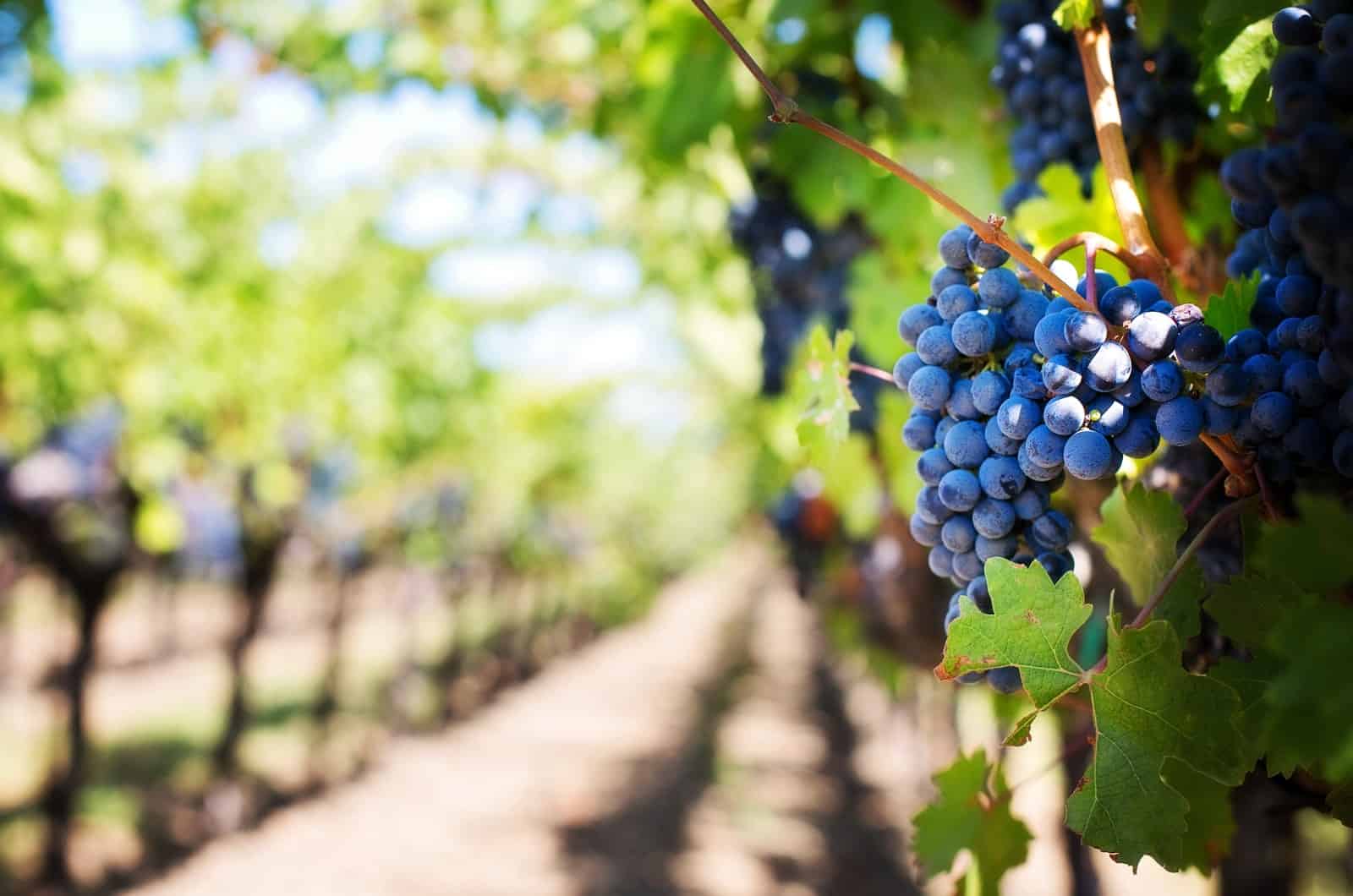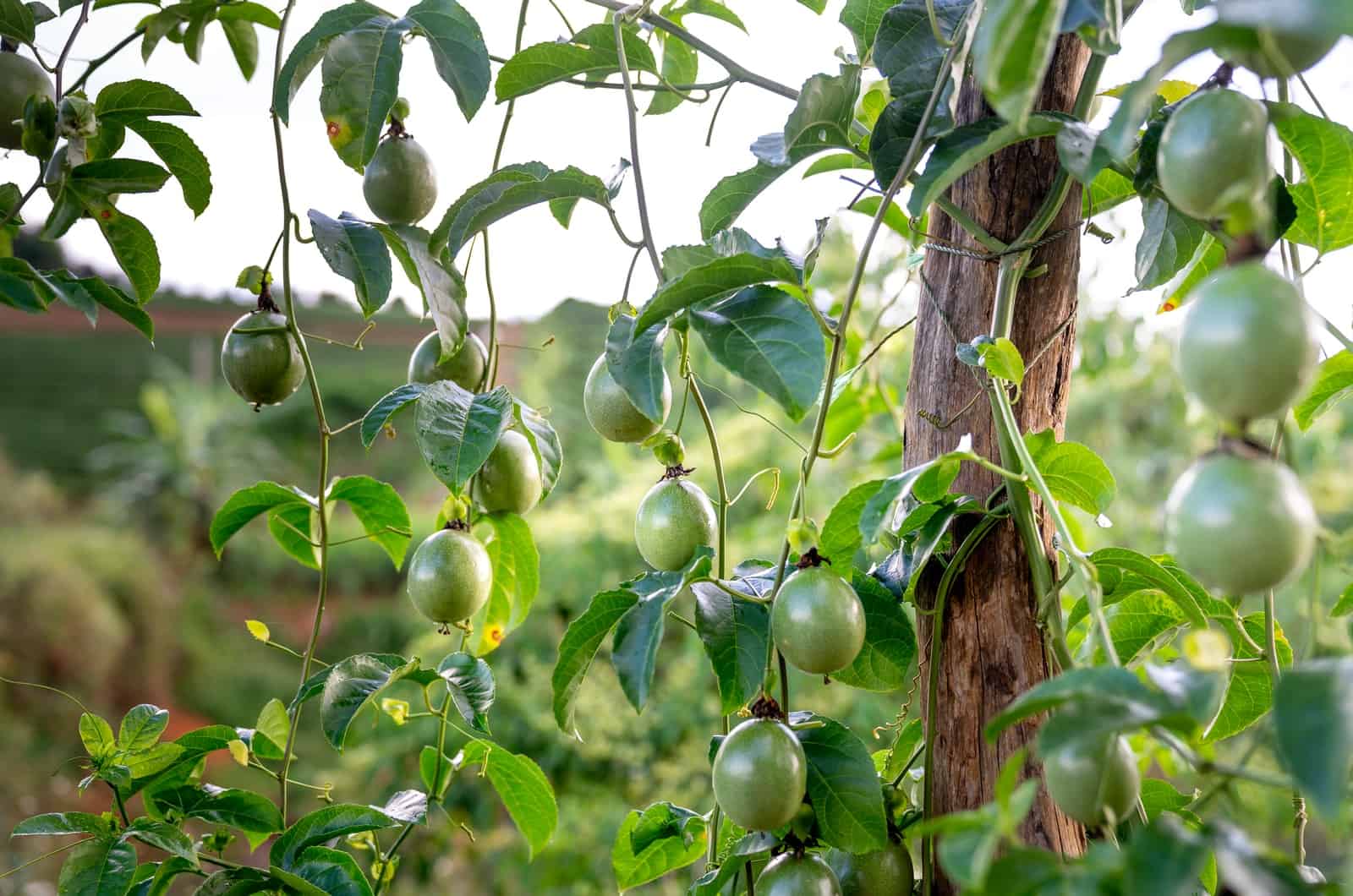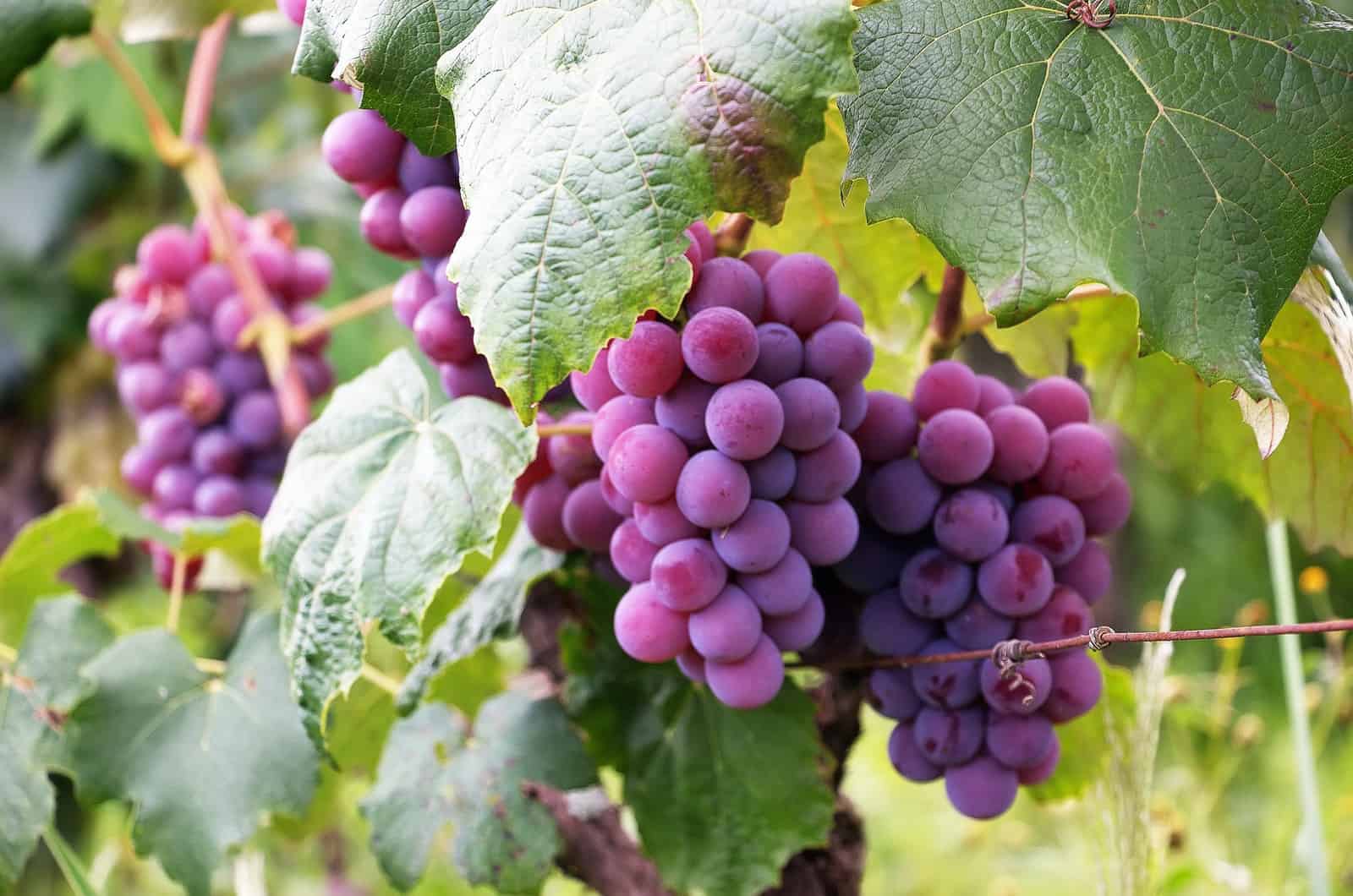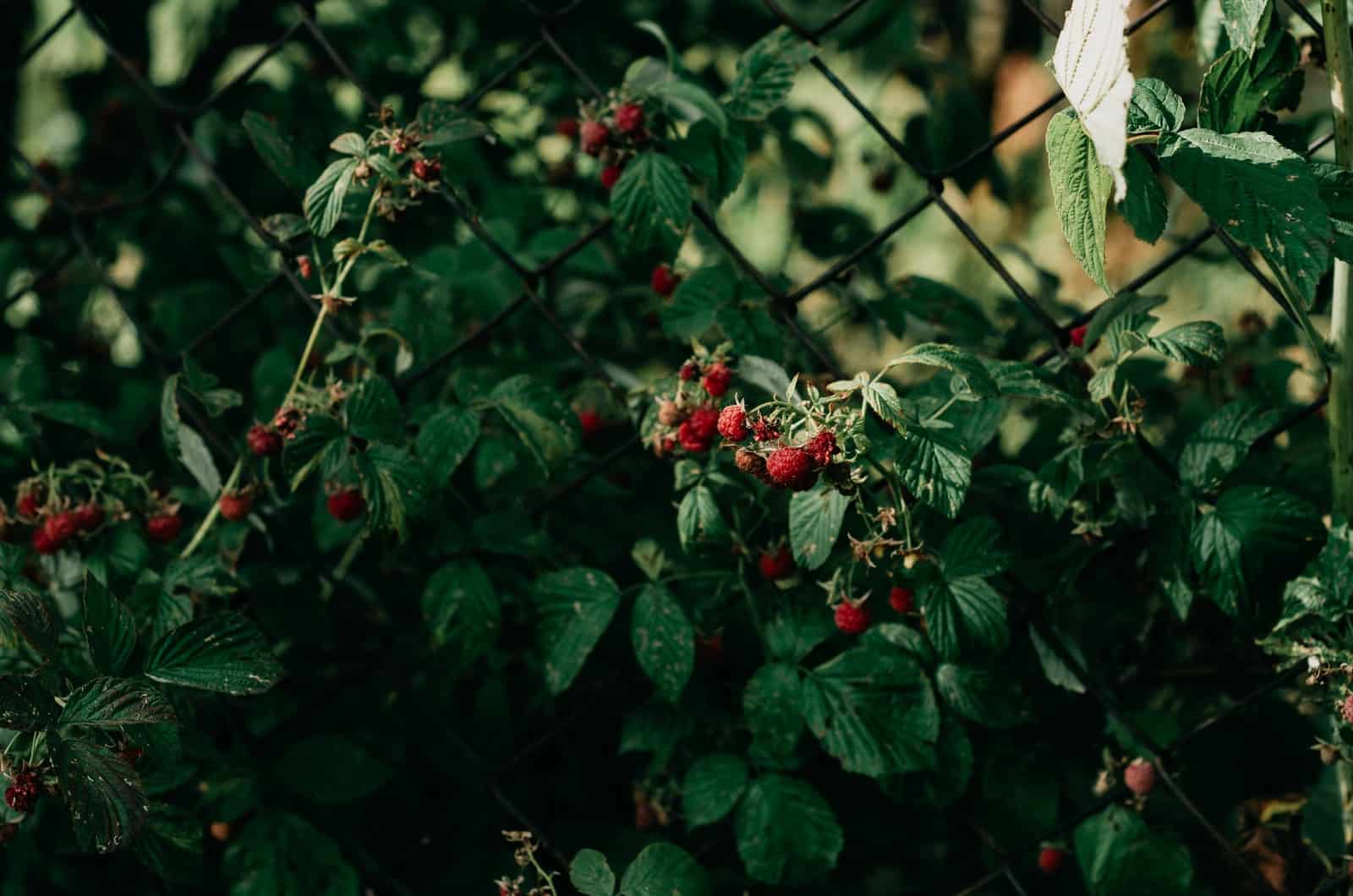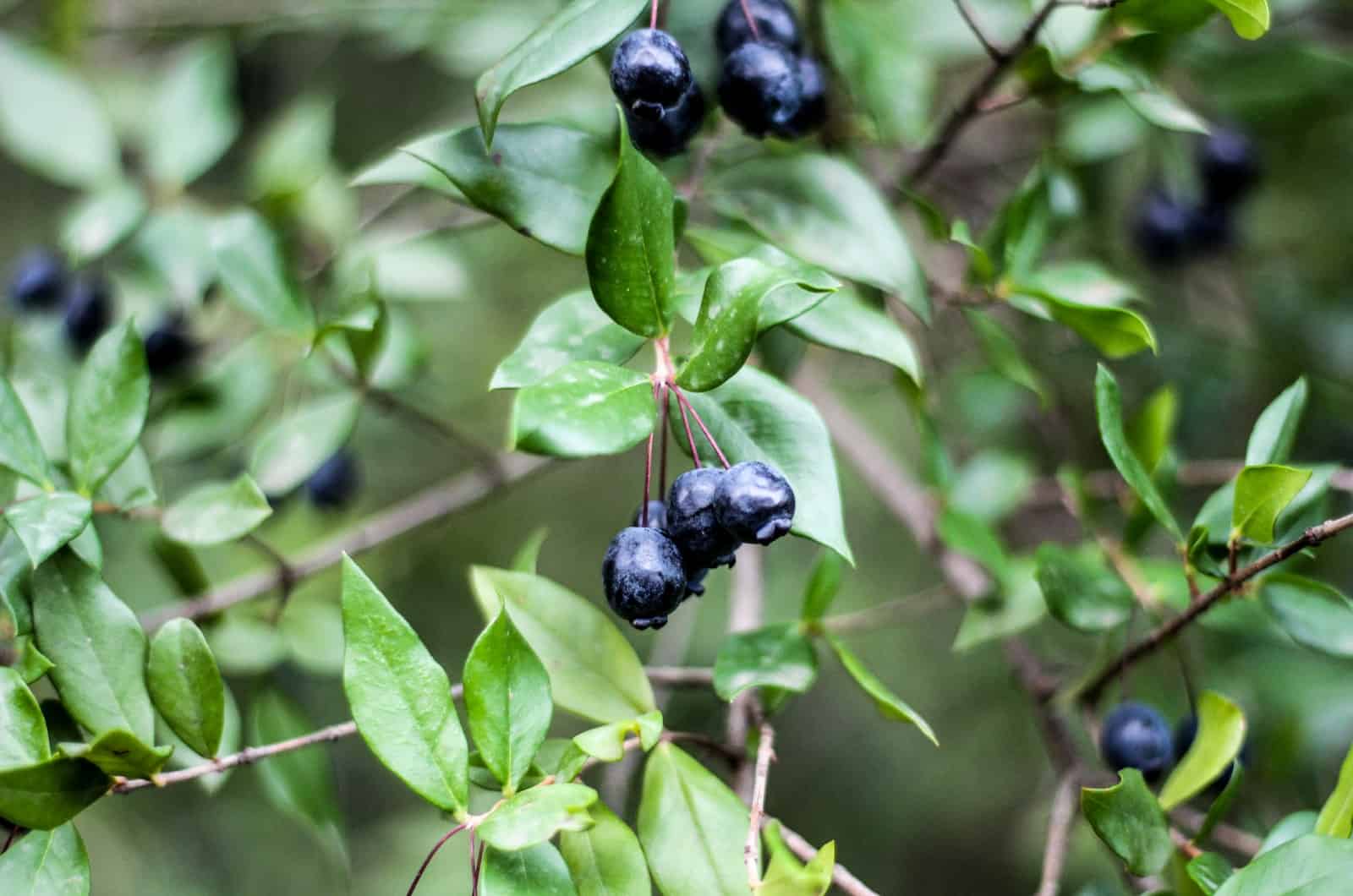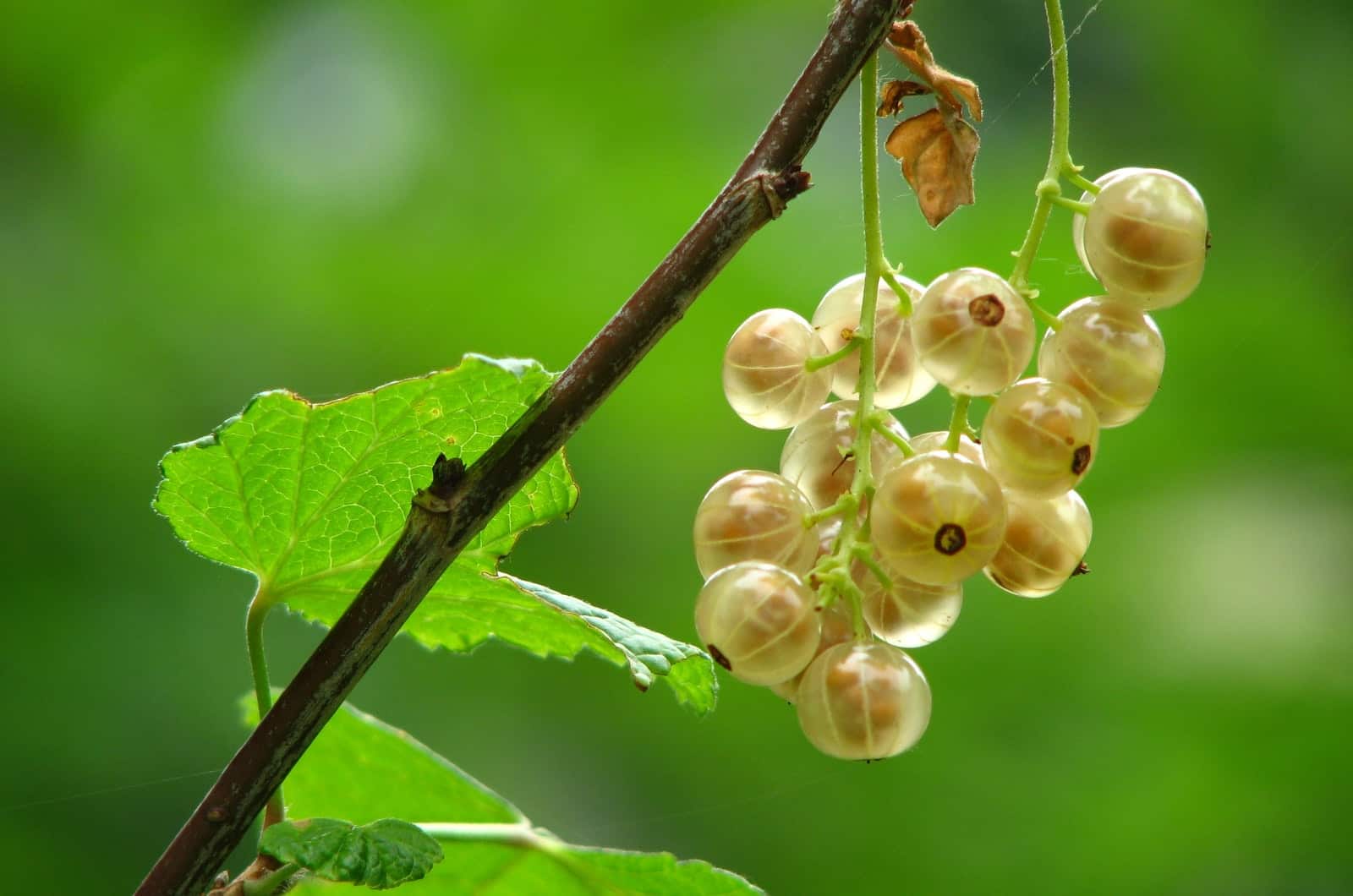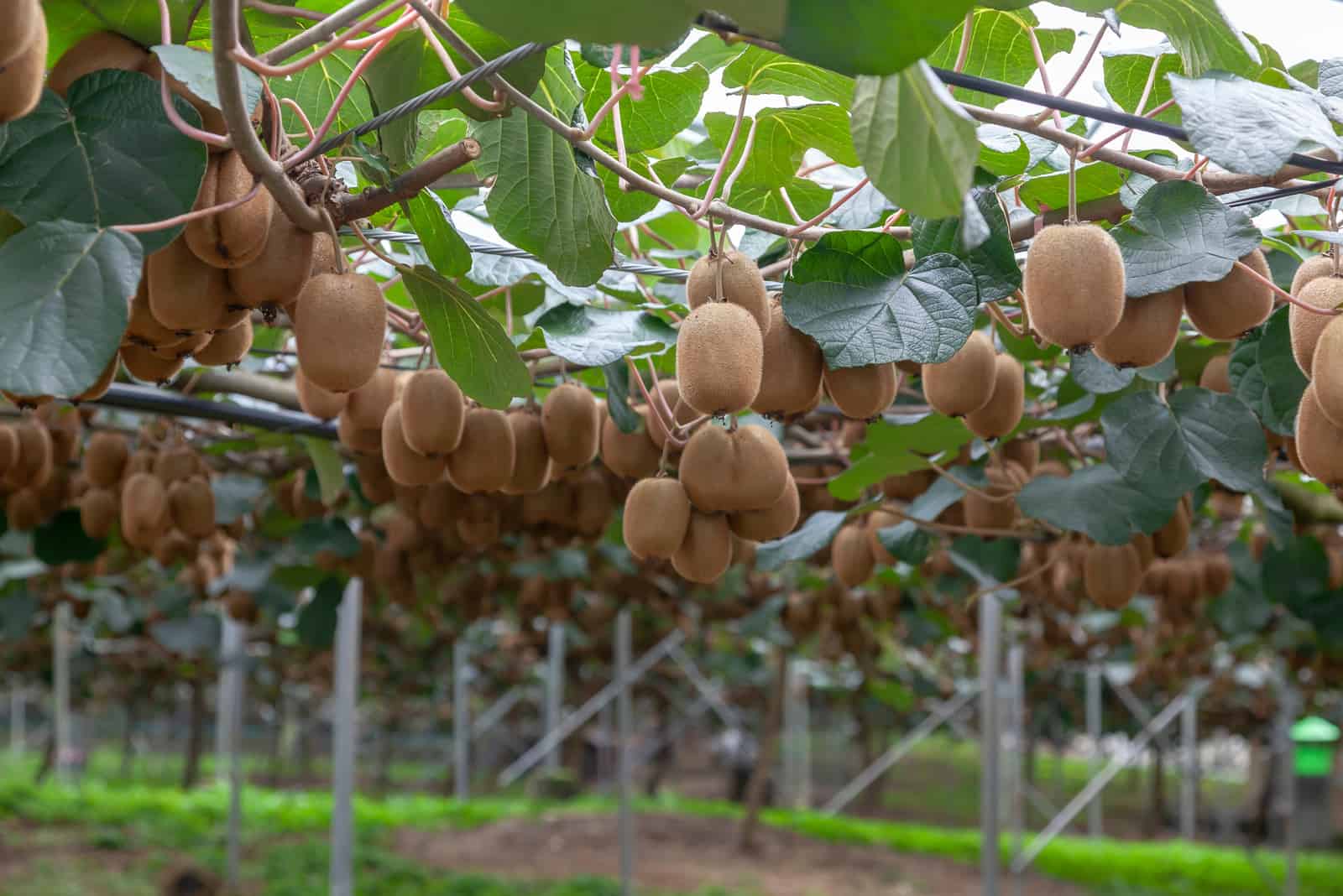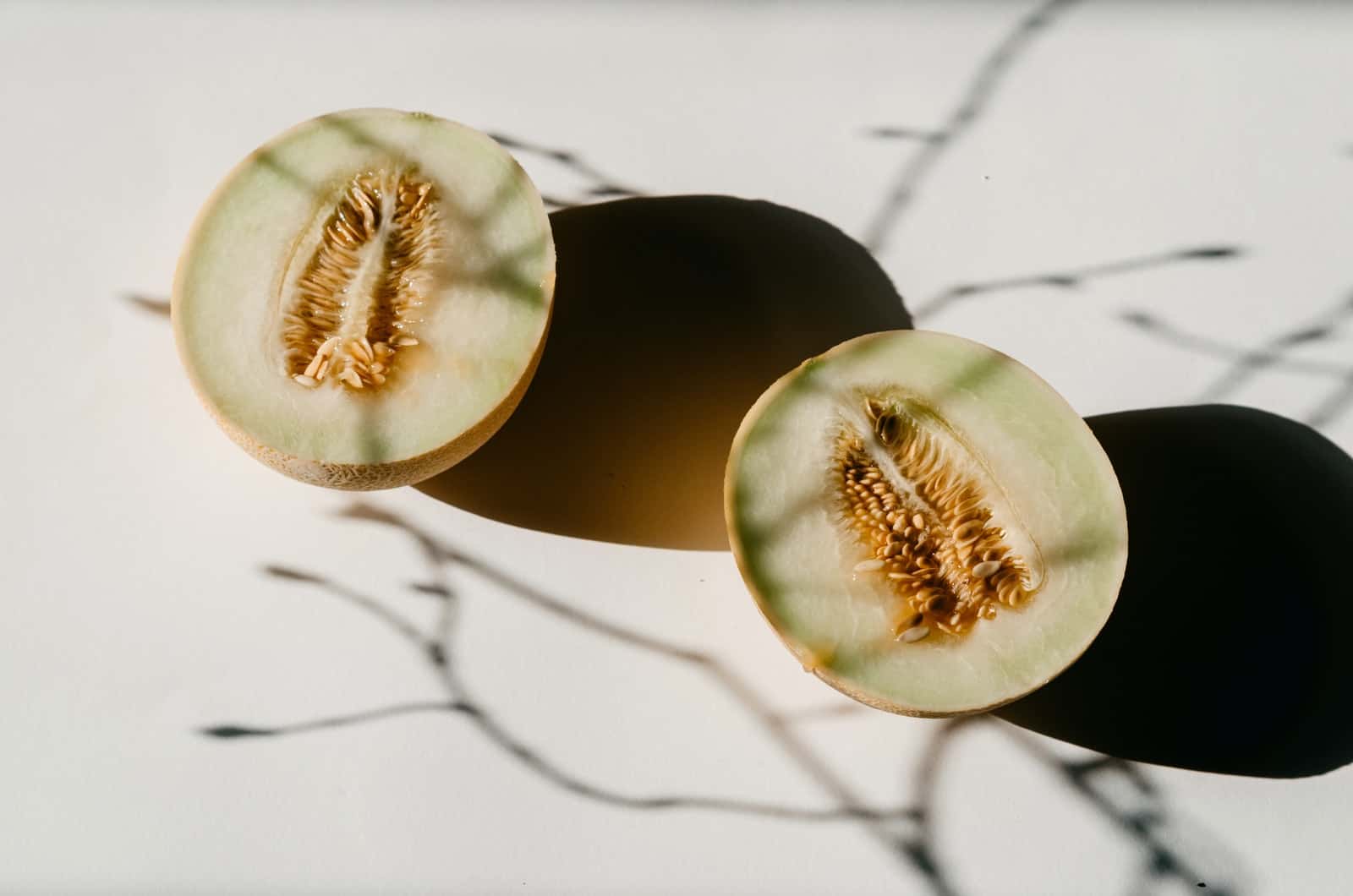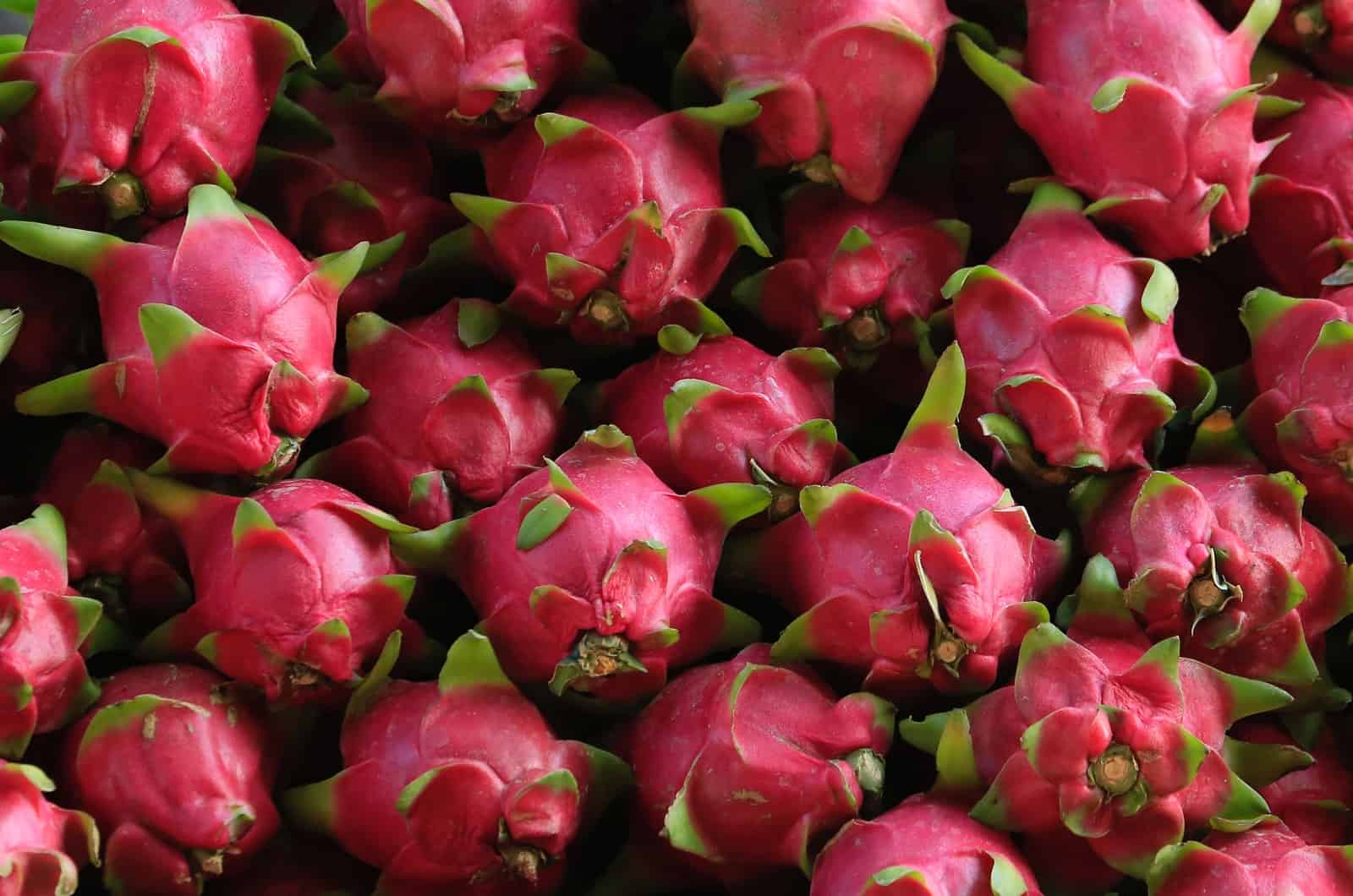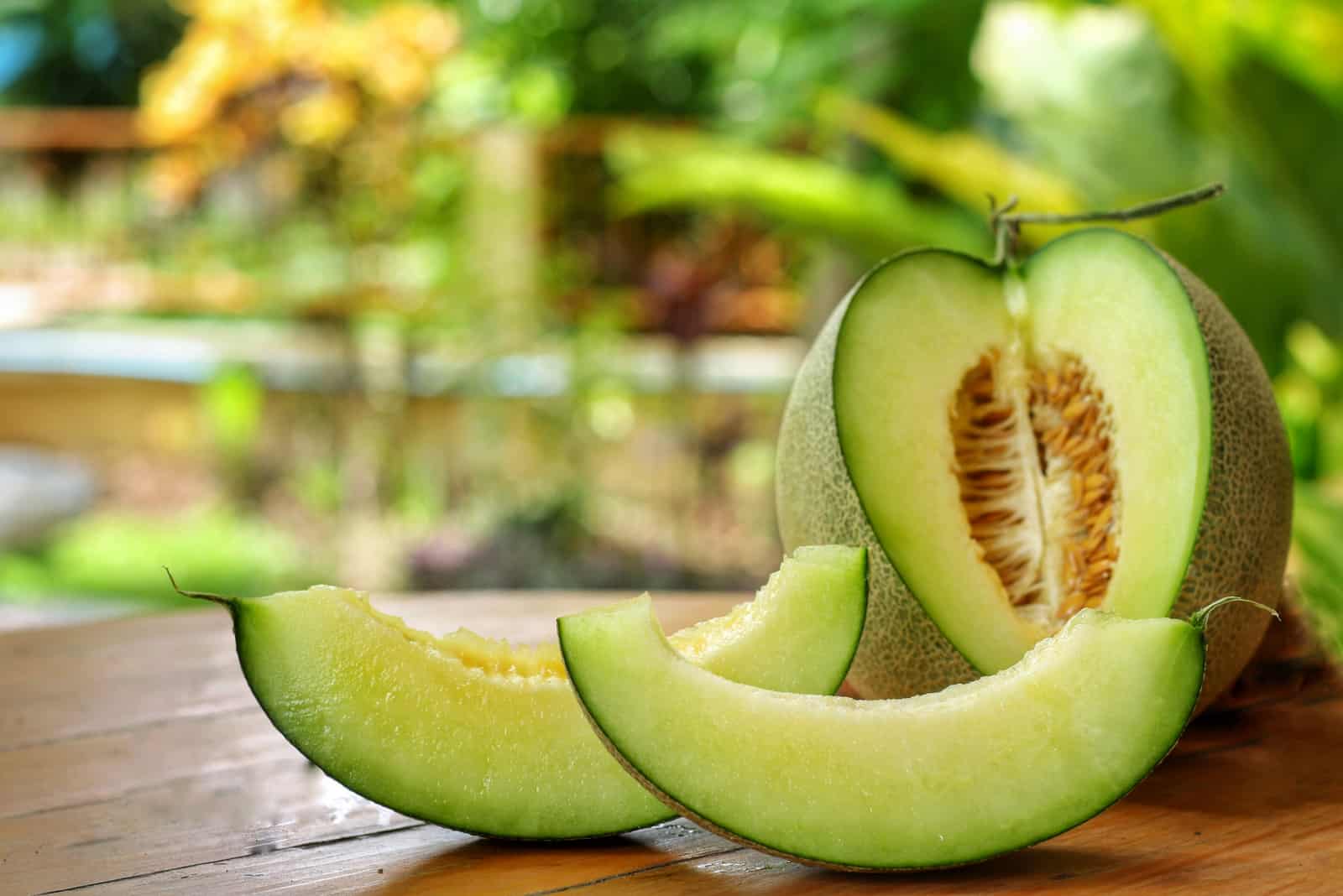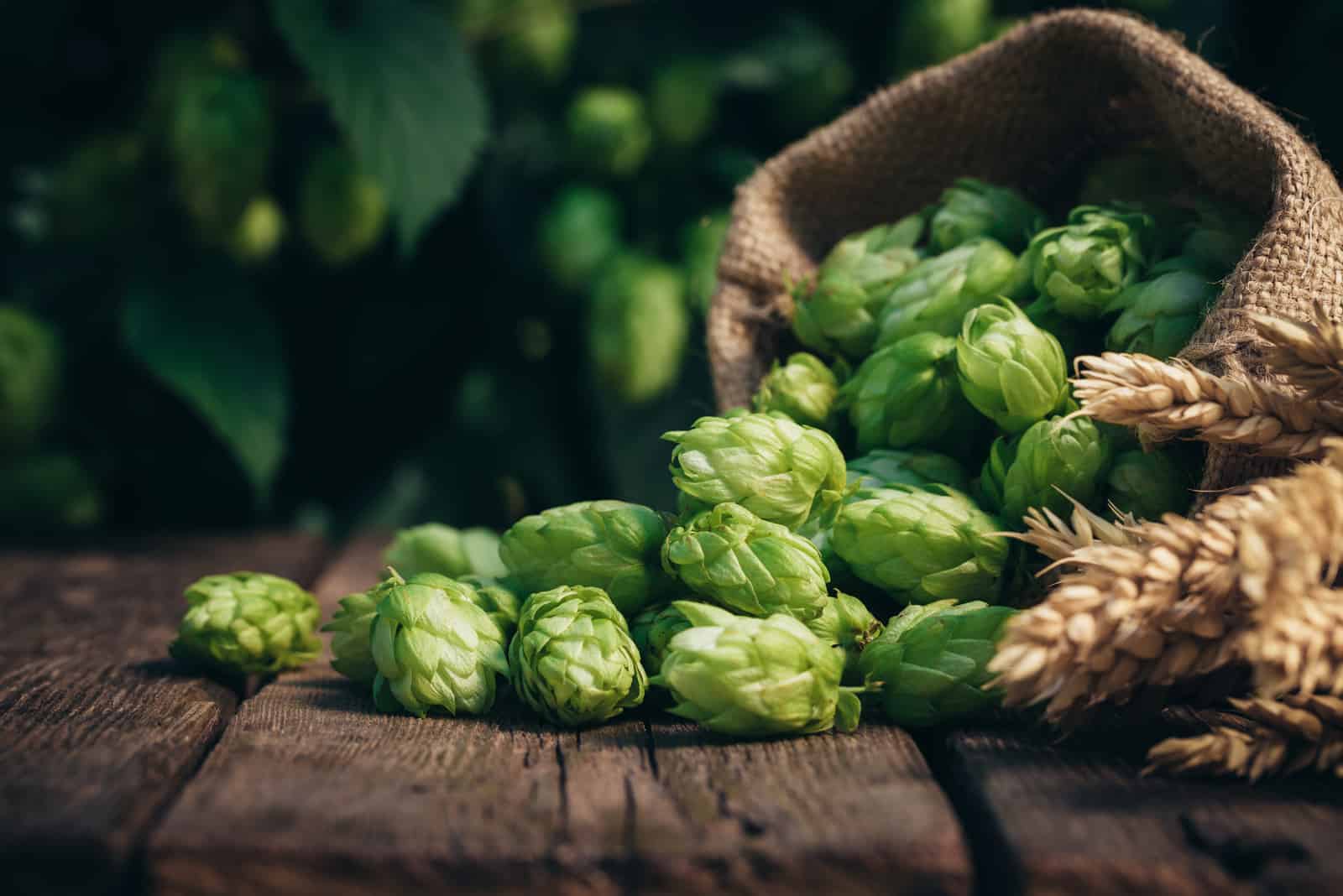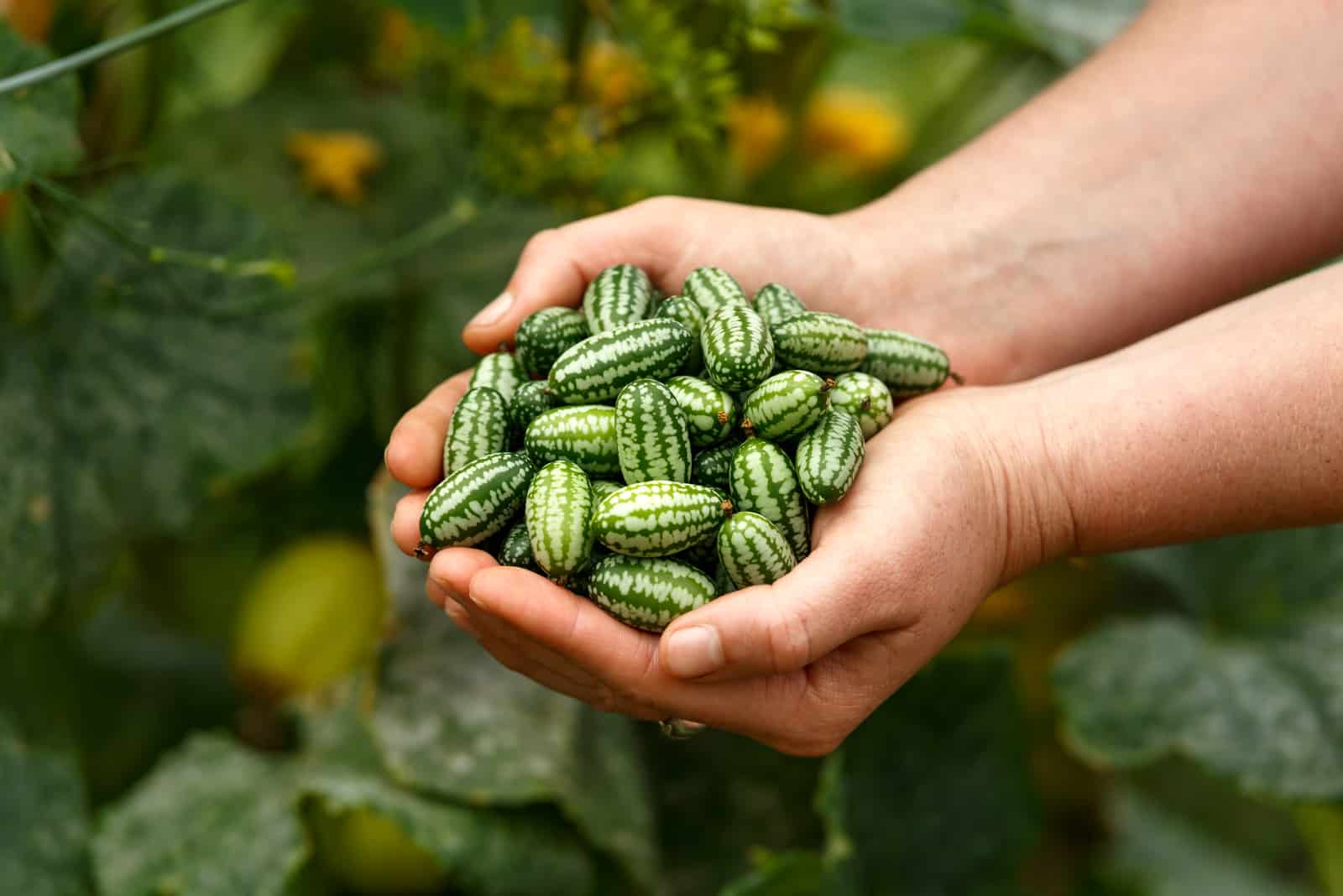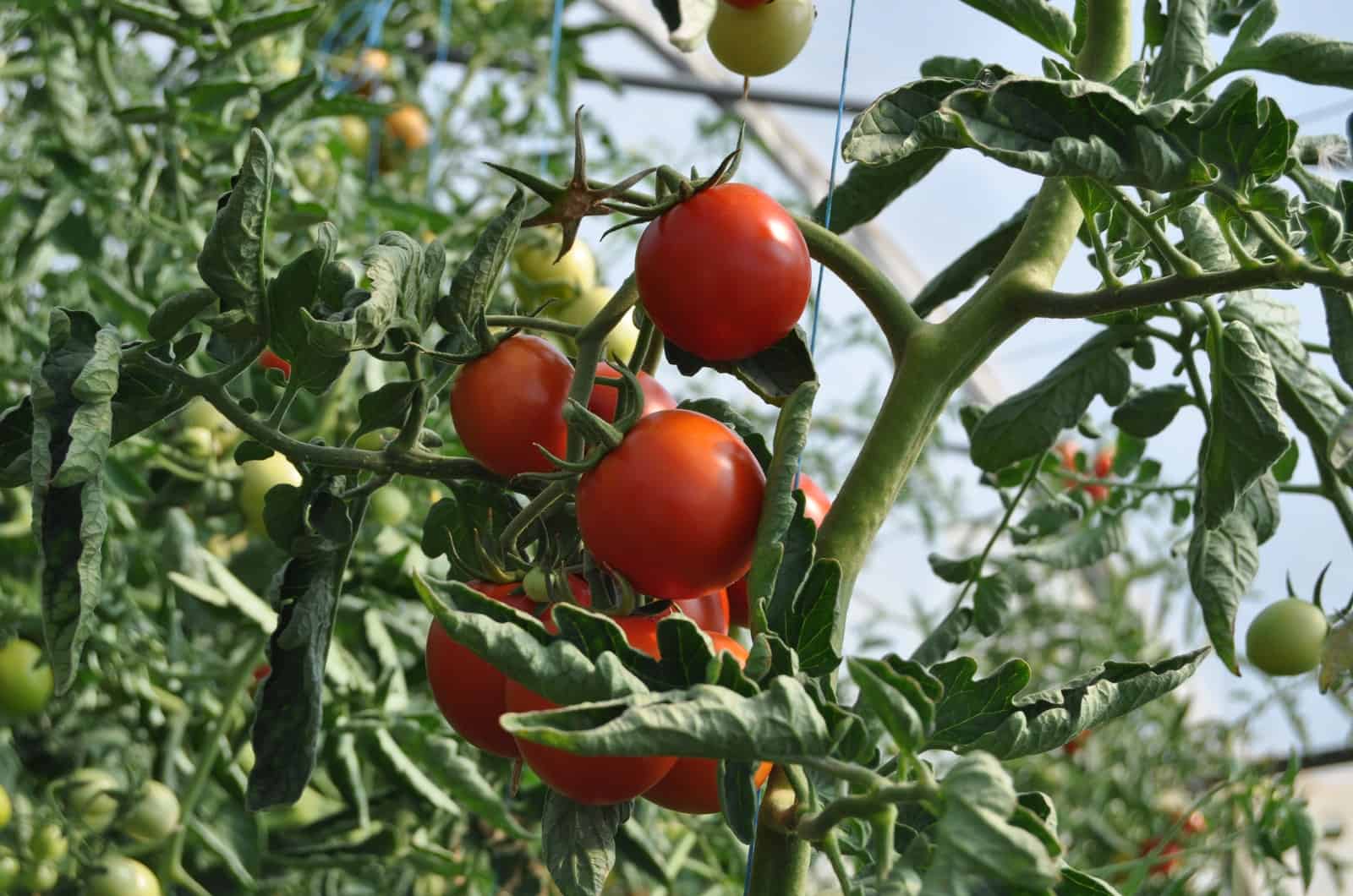Many gardeners would agree that there are only positives to growing your own fruit vines.
You actually have four possible positive outcomes; your garden looks even more beautiful (if possible), you get edible fruits, you have a private space, and fruit vines attract pollinators (that last one may not sound great, but trust me, it’s beneficial).
Growing delicious fruit vines is an excellent opportunity to make the best of smaller gardens.
I decided to make a list of fruit vines and share some care tips. I will also mention the health benefits of each fruit vine to encourage you to grow one.
Let’s get started!
The Most Common Fruit Vines
I’m sure you already know that blueberries and raspberries are vining fruits. Some exotic fruits like passion fruit and dragon fruit are also known to gardeners in specific areas.
I will show you how to grow two vines that are always topics of discussion as to whether they are fruits or vegetables: tomatoes and cucumbers. They are fruits, as they form from a flower and contain seeds.
It’s important to know where to plant fruit vines according to the hardiness zones and which type of structure they can grow on. There are many options; you can choose a pergola, trellis, fence, and more.
No matter which fruit vine you choose, typical or exotic, you won’t make a mistake.
Let’s dig deeper!
Passion Fruit Vine (Passiflora edulis)
Due to its taste and health benefits, passion fruit is a must for almost every diet plan made by nutritionists. It’s considered to be a superfood for many reasons.
Passion fruit, otherwise known as passionflower, is a tropical plant with unique flowers of different shapes and textures.
Taking care of this fruit is not extremely difficult. However, you should pay attention to the conditions which will help it to thrive.
You will have to ensure you have soil with a slight acidity and a good drainage system.
Before we move on to the other requirements, let’s see some basic info:
[table id=88 /]
Appearance
You will mostly find purple and yellow passion fruit. The purple fruit is smaller and can be round or oval. On the other hand, if the fruit is yellow, it will be larger. I need to remind you that if the passion fruit is green, it’s not yet ripe.
However, if you buy green passion fruit, just leave it for about a week to ripen.
The fruit’s waxy rind wrinkles as it ripens. Orange-colored juice and crunchy seeds combine in the pulp.
When buying this fruit, remember that the heavier the fruit, the more moisture inside.
This fast-growing fruit vine can grow up to 15 feet tall and 5 feet wide.
Temperature And Light Requirements
The passion fruit plant appreciates full sun. Plant it outdoors in spring or summer if you live in warmer climates.
On the other hand, if you live in colder climates, you can grow it indoors in a container, but you have to ensure it gets at least 4 hours of light.
This type of vine needs a lot of adjacent space to spread its roots.
Watering And Fertilizing
This fruit needs to be watered at least once a week to grow healthily. When you plant it for the first time, soak the soil thoroughly.
It has to be watered more often when it starts flowering and producing fruits.
Fertilizing should begin in summer, and it should be applied once a month until fall.
The best fertilizer should have an NPK ratio of 10-5-20.
Higher quantities can cause burns on the fruits and stunt their growth.
Pruning
Prune regularly unless you want the entire garden to be covered in passion fruit roots.
By pruning, you can encourage it to climb a lattice or an arbor, for example.
Pruning cuts can make the plant denser and produce more flowers and delicious fruits.
Prune before spring and remove all diseased or dead branches.
Pollination And Harvesting
Flowers of this type of vine contain both female and male parts. This feature enables the plant to self-fertilize. Sometimes, the plant won’t be self-compatible and will need cross-pollination.
Pollen is relatively heavy, so wind pollination isn’t possible, and the plant relies on insects such as bees.
After pollination, the plant will be ready to harvest in 2 and a half months.
Harvest the fruit when it’s soft to touch, as it will be easy to remove it from the vine (just give it a slight twist).
Health Benefits
Prepare to see a list of passion fruit health benefits. I’m sure that after seeing the list, you will go straight to the market; to buy seeds or fruit.
• Vitamin C: Good for blood vessels, muscles, contains collagen (great for skin), lowers inflammation, and protects from colds and certain cancer types.
• Vitamin A: Good for eyes, cells, and the immune system.
• FIber: Keeps bowels healthy and moving, gives energy, lowers cholesterol, and reduces the risk of heart disease.
Grapevines
Love wine? Grow grapevines. Actually, grow them for many other reasons.
Grapevines are vigorous growers and produce versatile fruits. You can choose from white or red types. Some grapevine types are cold-hardy.
Plant them along a fence as they grow thick and high if you love privacy.
You can also grow them on a trellis, arbor, or stake.
You should buy this type of vine when they are dormant and bare-root.
Ensure they have a loamy soil with gravel, shay, clay, or sand.
Now, let’s see some basic information:
[table id=89 /]
Appearance
This climbing plant has an ellipsoid shape and large green leaves.
The fruits come in two colors, red (some call them black grapes) and white (some refer to them as green grapes).
Depending on the species, they can grow up to 20 feet tall and up to 12 feet wide.
Temperature And Light Requirements
Grapevines prefer warmer conditions, and some varieties, like Muscat of Alexandria, will thrive in extra heat.
This type of vine will grow best where temperatures are about 61°F, from early spring.
Ensure you plant them in a spot in your garden where this vine can receive sunlight and where it is away from shade.
Watering And Fertilizing
Water newly planted grapevines to avoid transplant shock. Water once a week in its first growing season.
When they start to produce fruits, reduce watering to help the fruit to ripen.
These plants need fertilizers rich in nitrogen, and they should be applied after the vine blossoms.
If you decide to use manure, choose rabbit or poultry manure and apply it in January or February.
Pruning
Grapevines should be pruned in spring. Remove as many old woods as you can.
They should be pruned into a horizontal trunk. This way, it will be easy to remove them from your trellis.
Pollination And Harvesting
Most of the species are self-pollinating. Wind, insects, or birds transfer pollen to the grapevine flowers.
The signs of ripen grapevine, ready for harvest, include colorful, juicy, and plumped grapes. They will be tightly attached to the stems and taste somewhere between sweet and tart.
Health Benefits
• Lowers blood pressure and improves the immune system.
• Protects from heart disease and reduces cholesterol.
• Improves sleep and helps to maintain brain health.
• Slows down aging.
Raspberries
Good news! Raspberry vines are the easiest to grow. To ensure success, plant a one-year cane in early spring.
Just one raspberry bush can produce hundreds of berries in one season.
There are two types of raspberries to grow as vines: summer-fruiting raspberries and ever-bearing raspberries.
Raspberries require slightly acidic soil with good air circulation. Let’s see some basic information.
[table id=90 /]
Appearance
Raspberries come in different colors: red, purple, golden, and black.
Climbing types can grow up to 20 feet tall.
Temperature And Light Requirements
Raspberries thrive best at temperatures around 70 to 75 degrees Fahrenheit.
These vining plants prefer full sun.
Watering And Fertilizing
Raspberries should be watered once or twice a week during their growing season.
When they start to produce fruit, water them four times a week.
It’s important to know that these are shallow-rooted plants. Therefore, just keep the surface of the soil wet.
During the first year of growing, apply 10-10-10 fertilizer.
In the second year, add a higher amount of the same fertilizer.
Avoid fertilizing the plant base as it can suffer from fertilizer burns.
Pruning
Don’t prune first-year canes if you want them to have 2 crops.
Remove first-year canes after the first fruiting. Make sure you don’t damage young first-year canes as they will produce fruits in the fall.
Pollination And Harvesting
Raspberries are self-pollinating, but bees are responsible for most of their pollination.
Harvest ripe berries early in the morning and place them in shallow containers.
Never water freshly harvested vines.
Health Benefits
• Improve heart function as they contain potassium.
• Lower blood pressure.
• Prevent heart disease (rich in omega-3 fatty acids)
• Improve skin and bone health and regulate blood sugar (as they contain manganese).
Blueberries
Blueberries are easy-to-grow deciduous vining plants.
They are well-grown in USDA zone 3 through 9.
A peat-based potting mix retains moisture well and prevents the dehydration of blueberry plants.
Let’s see some basic information:
[table id=91 /]
Appearance
The oblong and leathery green leaves turn to bright red in fall.
They have white bell-shaped blossoms, formed in clusters, leading to green berries that ripen to blue.
If you are asking yourself if blueberries have seeds, check out here.
Temperature And Light Requirements
Blueberries appreciate the sun and warmer temperatures and if you can find such a spot, try planting blueberries there. If you grow blueberries in a pot, try moving the pot into a sunny spot.
However, blueberries shouldn’t be overexposed to the full sun. This is due to their native habitat, where they are protected by other plants.
Therefore, a sunny and warm spot will help your blueberry to thrive in no time.
If you want the blueberry leaves to stand out, ensure good lighting.
Watering And Fertilizing
The watering schedule is different in the first two years. They need even more water than in the fruiting stage.
I suggest you install a well-functioning drip system to avoid water loss
As far as the fertilizer is concerned, you should choose a slightly acidic, water-soluble fertilizer. If you prefer organic fertilizers, you can use a fish meal or blood meal variant.
Pollination And Harvesting
These vines are insect-pollinated (honey bees are the most common pollinators).
You can expect the first blueberries from June to August.
When you notice that they have turned blue, wait a couple of days until they fully ripen. As soon as you touch them, they will quickly fall down.
Pruning
Growers suggest skipping the pruning in the early growth stages. When pruning, remove old and leave middle-aged or young stems.
This pruning method sustains production. I suggest you replenish the mulch when you are planting blueberries for the first time.
If you notice leaf drop, you should replenish the mulch. You can add nitrogen by using soybean meals.
Health Benefits
Blueberries are rich in vitamins, mainly vitamin C. They have antioxidant properties.
The seeds are rich in fiber, but also in vitamins K and C.
If you are worried about the carbs, their percentage is 14%, which is quite low when compared to other foods. Additionally, blueberries are 84% water, and the percentage of carbs is negligible.
Blueberry plants contain low percentages of fats, which makes them perfect for a balanced diet.
Vitamins and minerals are essential for skin health but also for the prevention of blood clots. As blueberries have a lot of them, make them a part of your regular diet.
You can improve the production of amino acids in your body with blueberries, as they contain magnesium.
I suggest you make a blueberry smoothie (a healthy version).
Gooseberries
These easy-grow climbers were once banned as they can destroy trees.
These plants are ideal for vertical gardening and just need well-drained soil.
Let’s see some basic information:
[table id=92 /]
Appearance
Gooseberry fruit vines have bell-shaped flowers and green leaves. The berries come in different colors: pink, red, green, or yellow.
The plant grows up to 4 feet high and wide.
Temperature And Light Requirements
These are very hardy plants and withstand temperatures of -22 to 31°F.
They appreciate morning sun and afternoon shade.
Watering And Fertilizing
If you live in warmer climates, water your gooseberries twice a month.
Gooseberries need fertilizer rich in potassium.
Higher amounts of nitrogen will stunt the plant’s growth habits.
Pruning
In the first year, prune the tip just above a bud.
Prune side-shoots and suckers.
In the second year (from June to mid-July), prune young shoots and tie the tip to the cane.
After the leaves fall (late fall and winter), prune side-shoots to two buds and cut back one-third of the tip.
When the plant reaches five and a half feet, cut back the tip to five leaves.
Pollination And Harvesting
Gooseberries are self-pollinating and don’t require cross-pollination.
You may want to protect the fruits as birds also enjoy eating them.
When the fruit is soft to touch, it’s time to harvest, usually in July and August.
Health Benefits
• Improves immune system and helps skin.
• Helps convert food into energy.
• Improves heart health.
• Helps to control blood sugar.
• Reduces the risks of Alzheimer’s.
Kiwi
You can grow two types of kiwi in your garden: the kiwifruit and the hardy kiwi, or kiwi berry.
Kiwi loves slightly acidic soil with a pH ranging between 6.0 and 6.5.
Let’s see some basic info:
[table id=93 /]
Appearance
The Kiwi plant has heart-shaped green leaves that can grow up to 8 inches.
Blooms are white and fragrant and grow in clusters.
The plant produces brown, egg-shaped fruits in the fall.
Temperature And Light Requirements
Kiwis thrive best in warmer climates. If you live in colder climates, you should make a sunny wall in spring to protect the plant from frost.
Kiwis love full sun. However, they will produce fruits even in the shade, just not as many as usual.
Watering And Fertilizing
If there are some rainfalls in summer, kiwis should be watered every ten days.
On the other hand, if the kiwi’s habitat suffers from drought, water once a week.
The best fertilizer for kiwi vines is farmyard manure. First, water the vine’s base and then apply fertilizer around the root zone.
Winter is the best time to fertilize kiwis, precisely January or February.
After fertilizing, water the plant thoroughly.
Pruning
Pruning is the key to success in growing kiwi vines. The easiest way to prune kiwis is to prune the oldest stems in winter after its produced
fruits. The thickest stems are the oldest and should be pruned to ground level.
There is one more way to prune kiwis. Train kiwi vines in an espalier shape.
Pollination And Harvesting
Kiwis are dioecious, which means that the male and female flowers are on separate plants.
You can grow the Hayward female variety with the Tomuri male variety.
However, sometimes it’s not possible to buy both varieties. Don’t worry; many self-pollinating cultivars are available nowadays.
You can expect the plant to produce fruits in mid-fall, and they should be soft to touch when they are ready for harvest.
If there is a threat of frost in the following period, harvest all fruits and place them indoors to fully ripen.
Health Benefits
• Contain dietary fiber and reduce constipation.
• Prevent eye disease and lower blood pressure.
Cantaloupe
Cantaloupes are one of my favorite foods in summer as they are juicy and refreshing.
I have to remind you though, that melons are often referred to as cantaloupes in North America.
These aren’t real cantaloupes. Cantaloupes are a specific type of muskmelon.
Let’s start with some basic info:
[table id=94 /]
Appearance
These melons have a green-tan rind and have orange-colored and sweet flesh inside.
A rind is often covered in a pattern that reminds us of a spider web. However, some varieties have stripes on their rinds.
Temperature And Light Requirements
Cantaloupes thrive best at temperatures from 70°F to 90°F.
These vines prefer eight to ten hours of full sun each day.
Watering And Fertilizing
These plants require moderate watering. Don’t let the Cantaloupe soil dry out completely, but also pay attention that it’s not waterlogged.
You can use pop-up fertilizer (10-34-0) for these melons and apply it in spring.
Pruning
Prune end buds after the plants produce their fruits.
Don’t worry if your plant produces fewer fruits; they’ll be of a better quality.
Pollination And Harvesting
These are self-pollinating plants. The male flowers open first, and about one week later, the female flowers open, too.
The Cantaloupe fruits are ready to harvest when they turn yellow. The best way is to harvest the fruits when the vines are dry.
Health Benefits
• Improves immune system and lowers blood sugar levels.
• Contain electrolytes that help you to stay hydrated and have increased energy levels.
Dragon Fruit
I would call it ‘a fruit with the strangest look’. However, these tropical fruits are probably one of the best you’ll ever try.
Let’s see some basic info:
[table id=95 /]
Appearance
Dragon fruit has pink skin, green flesh, and black seeds (an excellent combination of colors, right?).
Some varieties have white flesh with yellow skin or red flesh and red skin.
Temperature And Light Requirements
These plants prefer warmer climates as they are native to the tropics.
They need at least six hours of full sun a day.
Watering And Fertilizing
Water when the soil is almost dry. Avoid watering moist soil as it will lead to various diseases.
Use manure and lime for fertilizing and replenish it every spring.
Pruning
Prune lighter branches, as darker branches are mature and can bear fruits.
You should prune dragon fruit vines during the rest period in the winter.
Pollination And Harvesting
Depending on the variety, dragon fruits can be self-pollinating, self-sterile, or self-fertile.
The fruit is ready to harvest when it changes color and is soft to the touch (if it cracks, it’s overripe).
Health Benefits
• Lowers blood sugar levels and contains prebiotics, improving the balance of good and bad bacteria in the intestines.
• Increases iron levels.
Honeydew Melon
These low-maintenance plants should be a beginner’s choice to start growing fruit vines.
However, you may have problems growing them through a fence. There’s a solution though; just ensure sturdy support.
Let’s see some basic info:
[table id=96 /]
Appearance
Honeydew Melons have yellow blossoms and oval-shaped fruits with a green flesh.
They can grow up to 10 feet wide.
Temperature And Light Requirements
These plants prefer warmer temperatures above 65 °F, and best thrive in full sun.
If the temperature suddenly lowers, protect the plant by placing row covers over them.
Watering And Fertilizing
Keep the soil moist, as dry soil can cause damage to the plant.
The fertilizer should be rich in phosphorus and potassium.
You can use compost or manure to improve growth.
Pruning
Remove side shoots and main growing tips, and as soon as new growths appear, remove them.
Pollination And Harvesting
These fruit vines are pollinated by insects.
Sometimes, you will have to help with pollination as the females have small flowers. One male flower can pollinate four female flowers.
Health Benefits
• Improves the immune system and lowers blood sugar levels.
• Contains electrolytes that help you to stay hydrated and have increased energy levels.
Hops
A long time ago, hops were used to reduce anxiety and stress, and as sedatives.
Nowadays, we grow them because of their tasty fruits (or berries, or grains, as some call them) and add them to beer.
Let’s see some basic info:
[table id=97 /]
Appearance
The hops plant has green cone-shaped blossoms.
Hops can grow up to 20 feet tall and 20 feet wide. Apparently, it needs a lot of space!
Temperature And Light Requirements
Hops need a lot of sun but grow well in partial shade.
These plants thrive in warmer temperatures.
Watering And Fertilizing
Hops should be watered thoroughly and be drained well until the next watering, as they don’t tolerate waterlogged soil.
Apply a fertilizer rich in nitrogen or use manure as fertilizer.
Pruning
These plants need regular pruning.
Leave two to three vigorous shoots and remove the rest.
When shoots mature, wind them clockwise around the support.
Here’s a video on pruning and training hops:
Pollination And Harvesting
Hops are wind-pollinated, which means they don’t need insects.
When the cones begin to dry, it’s time for harvesting. Then, place them in a cool place to dry completely and become brittle.
Health Benefits
• Improves appetite and reduces intestinal cramps.
• Improve skin health.
Strawberries
Strawberries are a must in every home garden when it comes to growing fruit vines. They are quickly grown, and more importantly, they produce tasty and flavorful fruits which can’t be compared with those found in stores. Therefore, they’re worth it.
The three most common strawberry varieties are everbearing, June-bearing, and day-neutral. I recommend June-bearing for home gardens.
Let’s see some basic info:
[table id=98 /]
Appearance
Strawberries have green leaves and white blossoms, which they produce in spring.
During the summer, you’ll get succulent berries which are worth every second that you spend on caring for them.
Temperature And Light Requirements
These plants need six to ten hours of full sun each day.
Strawberries will grow well in places where the temperature ranges from 35°F to 85°F.
During colder periods, strawberries go into a dormant stage.
The best action to take during a colder period, would be to cover them with mulch made of pine needles or straws.
Watering And Fertilizing
Strawberry soil should always have water in the top part (top 1 inch approximately).
Water more often during flowering and fruiting and always water in the morning.
You can install drip systems.
Strawberries should be fertilized six weeks after planting, with a nitrogen-rich fertilizer, and again in August.
Pruning
Strawberries should be pruned in the second half of February.
Remove all runners and cut all bushes after harvesting.
Using a rake, remove all debris. You can add the debris to your compost pile.
Pollination And Harvesting
Strawberries can be self-pollinating but need bees to complete the process.
Fruit ripens four to six weeks after blossoming. Only red strawberries should be harvested. Pause your harvesting for three days and then
harvest again.
Health Benefits
• Strengthen the immune system and are good for the skin.
• Contain folate, which is necessary during pregnancy.
• Regulate blood pressure.
Mouse Watermelons
These watermelons are commonly known as Mexican Sour Cucumbers. Some may think that these watermelons are cultivated from
watermelons and cucumbers. However, if you try to cross those two plants, you won’t get mouse watermelons.
If you want to grow vegetables of a similar size, I suggest sugar pie pumpkins.
Here is some basic info:
[table id=99 /]
Appearance
Leaf axils produce five-petal, yellow flowers.
The fruit is green and oblong and has darker striations. Inside, there is white, crunchy flesh.
Some claim that these melons taste like sour cucumbers.
Temperature And Light Requirements
Mouse watermelons need at least six hours of full sun each day. More sunlight means more fruits.
These plants thrive best in warmer temperatures.
Watering And Fertilizing
Water these melons when a couple of inches of the topsoil is dry.
These plants should be watered thoroughly but left to drain, as they don’t tolerate waterlogged soil.
You can use compost tea as fertilizer for mouse watermelons. Fertilize after the first sign of flowering and do this every week.
Pruning
The plants need pruning when the vines start to tangle.
Prune the leaves so that the stems can receive full sun.
I suggest that you use pantyhose to support the plant, as the fruits can be heavy.
Pollination And Harvesting
Mouse watermelons need insects to pollinate.
If you don’t notice any insects on your flowers, use a cotton swab for manual pollination.
The fruit should be harvested when it’s plump and about an inch and a half long.
Health Benefits
• Regulate blood pressure.
• May prevent cancer.
• Prevent constipation.
Cucumbers
If you want a plant that won’t take long to produce fruits, grow cucumbers.
The only thing to pay attention to is to not let the fruits grow too large, as they will then taste bitter.
Here is some basic info:
[table id=100 /]
Appearance
This plant has large triangular leaves with long petioles.
They have elongated, green-yellow or dark green fruit.
The size depends on the variety.
Temperature And Light Requirements
Cucumbers thrive in temperature ranges from 53 to 59°F.
They love the full sun; make sure to plant them in a sunny spot.
Watering And Fertilizing
They need to be watered often, with quite a bit of water. The soil should be evenly moist.
The plants should be fertilized twice a month, with balanced liquid fertilizer, mixed with garden compost.
Pruning
Prune the growing tip when the plant has seven leaves.
Also, prune the tips of the flowerless side-shoots.
Pollination And Harvesting
Cucumbers rely on bees to pollinate. The pollination is successfully performed after the female flower falls off.
Harvest firm and green fruits that have rounded tips.
They grow rapidly, so make sure they don’t turn yellow and too soft.
Health Benefits
• Lowers blood sugar levels.
• Helps in aiding weight loss.
• Promotes hydration.
Tomatoes
Everyone’s favorite vegetables! Once again, tomatoes are fruits, and there’s nothing better than home-grown tomatoes.
Before we move on, let’s see some basic info:
[table id=101 /]
Appearance
I prefer red tomatoes, although they can be scarlet, yellow, or even green and purple.
Tomatoes can be oval, round, elongated, or pear-shaped, andI prefer classic round ones.
Temperature And Light Requirements
Tomatoes thrive best at temperatures of 65 to 75 F.
They love full sun.
The temperatures above and the full sun will undoubtedly give you the best results.
Watering And Fertilizing
Water these plants when a couple of inches of the topsoil is dry.
These plants should be watered thoroughly but left to drain, as they don’t tolerate waterlogged soil.
Use one tablespoon of ammonium nitrate as fertilizer. Apply it every six weeks.
Pruning
Prune side shoots, suckers, and axils as these plants grow.
Make sure to tie stems to support the plant.
Pollination And Harvesting
Tomatoes are self-pollinating and don’t need wind or insects to pollinate.
Leave the fruit to ripen naturally. Hold the plant’s stem with one hand, gently grasp the fruit, and pull with the other hand.
Health Benefits
You have to know that tomatoes contain lectins and they should be removed before you consume the fruits..
• Reduce the risks of heart disease and cancer.
• Control blood pressure and contain folate, which is necessary during pregnancy.
Wrapping Up
I grow many fruit trees and fruit vines in my garden.
There’s no better feeling than harvesting and eating fruits that I have successfully grown.
I’m sure you’ll be happy to plant at least one fruit vine, not only because of eating your own fruits, but also because they are a great addition to your garden decor and help ensure garden privacy (that we all sometimes need).
Until next time!
Like this post? Share or pin it for later!

